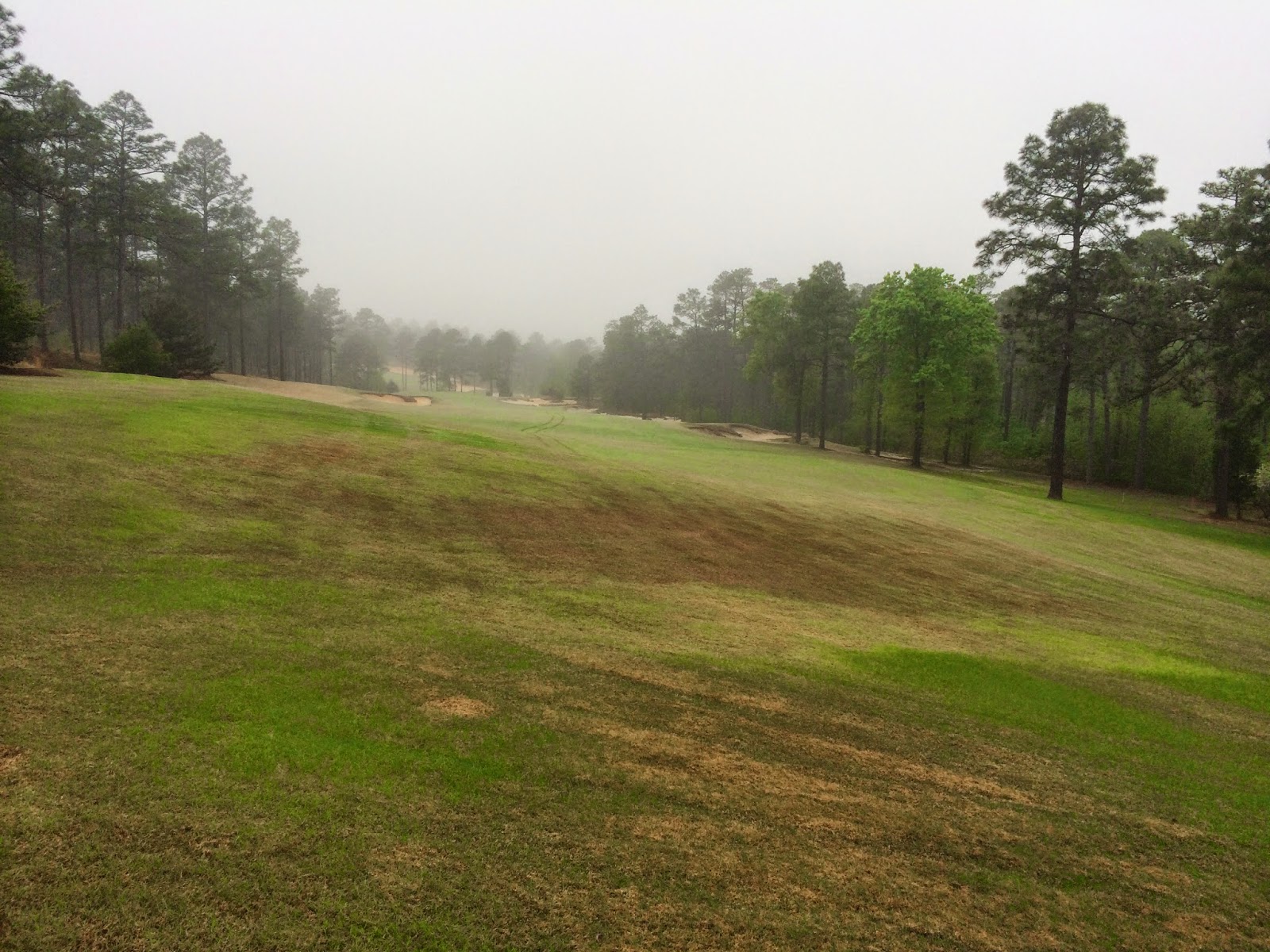This winter started in early November. We experienced consistent freezing temperatures for almost four months. We experienced record low temperatures on multiple occasion and the turf has suffered as a result. The historical average low temperature for Moore County, North Carolina does not reach freezing until late December. This year our morning lows were below freezing on November 8,9,13, 14, and 15. Our Bermuda grass entered dormancy very early. This was followed by having lows below freezing on 80 0f the next 144 days. We had a low of 6 degrees on January 7 and 1 degree on January 30. When it finally warmed up in April and the Bermuda grass began breaking dormancy, we had another frost in mid April setting the Bermuda grass back again.
We have experienced injury to our Bermuda grass in very many areas of the golf courses. It has occurred in areas we have seen it before. It has occurred in high dry sandy areas and low wet areas. It has occurred on northern facing slopes, especially shaded areas. It has affected our "tifsport" hybrid Bermuda moire than the other hybrid bermudas. We have seen odd patchy diseases we have never seen before. Turf that was weak going into winter was injured more severly than was more healthy turf. In many areas the above ground "aerial stolons" were killed and recovery is being slowly made from below ground rhizomes.
 |
| Winter injury to 5 North |
 |
| Unusual patch disease in Bermuda grass |
 |
| Winter injury to 1 South |
The greenup of our Bermuda grass is probably 3-4 weeks behind its normal time frame. We have areas which are thin and injured. We also have areas that are healthy and fine. The two holes along the lake on the North golf course are probably the healthiest holes we have. The lake provides a buffer to temperature change and these holes have more clay in their soil than most other areas which also buffers temperature swings.
We have also had some herbicide injury to our golf courses from our preemergent applications and our efforts to cleanup the poa annua around our greens. We also had injury to the 11th green on the South golf course from herbicide moving onto the green . This area has been resodded.
 |
| Injury to 11 green |
We are working to promote recovery from winter injury with aerification, verticutting and sodding. We have made fertilizer applications to promote growth and have more fertilizer applications scheduled for next week. We cannot force the Bermuda grass out of dormancy with fertilizer, but once it begins to grow we can push the grass to grow more with fertilizer. The optimum temperatures for Bermuda grass growth is highs of 85 and overnight lows of 65. We are beginning to get those temperatures now. We will also be applying water soluble fertilizer with biostimulants to push topical plant growth. These products contain plant hormones known as cytokinins and gibberillins and will promote growth and lateral movement of the turfgrass.
We feel badly that the golf courses are not as good as they should be and will be doing everything in our power to get them in the condition they should be. This is what we want the golf courses to look like.
 |
| Spring of 2013 |
No comments :
Post a Comment